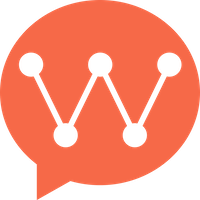What is WuKongIM SDK?
WuKongIM SDK is a comprehensive instant messaging solution that provides real-time communication capabilities for your applications. It supports multiple platforms and offers both simplified (Easy SDK) and full-featured SDK options.SDK Architecture
The WuKongIM SDK is built with a modular architecture that includes:- Connection Management: WebSocket-based real-time connections
- Message System: Comprehensive messaging with various content types
- Channel Management: Support for personal and group conversations
- User Management: User profiles and presence
- Data Synchronization: Reliable message and state synchronization
Development Principles
Cross-Platform Consistency
- Unified API design across all platforms
- Consistent behavior and feature parity
- Shared documentation and examples
Performance Optimization
- Efficient message caching and storage
- Optimized network usage
- Battery-friendly background operations
Developer Experience
- Simple integration process
- Comprehensive documentation
- Rich example applications
Getting Started
Choose your development path:Easy SDK
Quick integration for basic messaging needs
Full SDK
Complete feature set for advanced applications
Platform Support
Mobile Platforms
- iOS: Native Swift/Objective-C SDK
- Android: Native Java/Kotlin SDK
- Flutter: Cross-platform Dart SDK
- HarmonyOS: Native HarmonyOS SDK
Web Platforms
- JavaScript: Browser and Node.js support
- React: React-specific components
- Vue: Vue.js integration
- Uniapp: Cross-platform mini-program support
Key Features
Messaging
- Text, image, video, audio messages
- Custom message types
- Message reactions and replies
- Message editing and deletion
- Read receipts and delivery status
Real-time Features
- Instant message delivery
- Typing indicators
- Online presence
- Push notifications
- Auto-reconnection
Group Features
- Group creation and management
- Member permissions
- Group settings
- Invite and join mechanisms
Advanced Features
- Message encryption
- File upload/download
- Message search
- Conversation management
- Custom UI components
Next Steps
- Choose Your Platform: Select the platform you’re developing for
- Pick SDK Type: Decide between Easy SDK or Full SDK
- Follow Integration Guide: Complete the setup process
- Explore Examples: Check out sample applications
- Join Community: Connect with other developers

